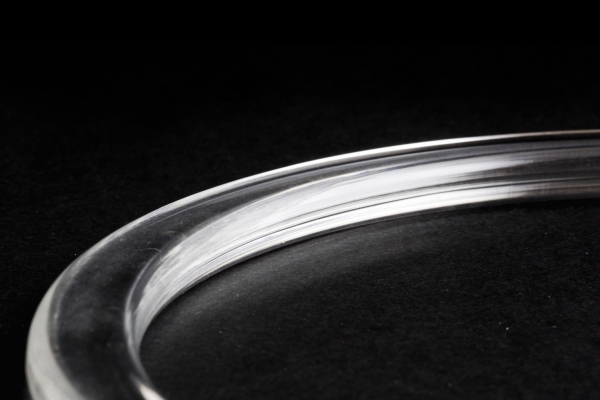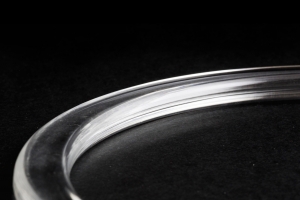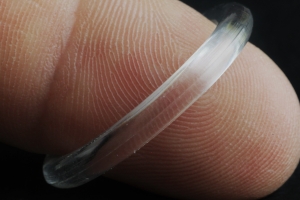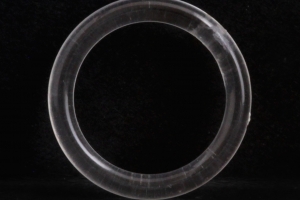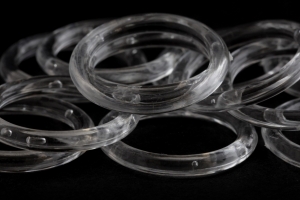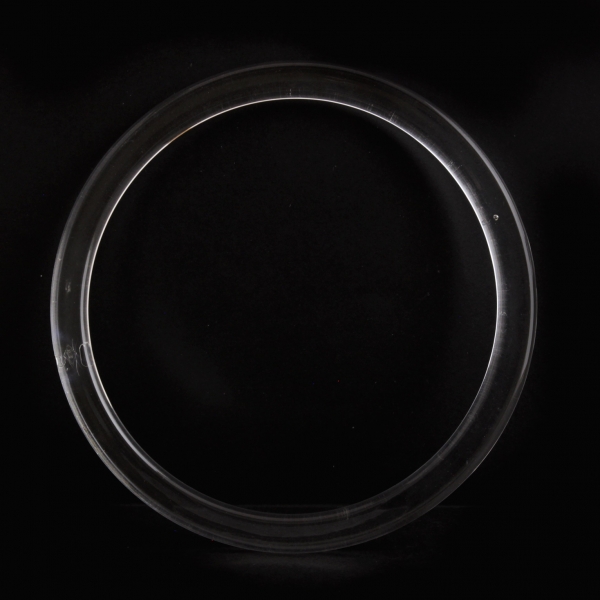
These transparent rings are made of acrylic and were probably injection moulded to get a perfectly clear, bubble-free object, although one sneaky bubble has made it into the larger hoop! The plastic is introduced to the mould in its liquid state, to which a catalyst has been added, causing it to set or ‘cure’, becoming a solid polymer. It heats up to about 85°C as it hardens, a process called thermosetting.
Often called acrylic resin, plexiglass or perspex, this material is widely used, stable, strong and versatile, and can be cast into almost any shape, colour or finish, and re-formed using heat. Acrylics are synthetic polymers that contain chemicals derived from acrylic acid. The most common acrylic is polymethyl methacrylate (PMMA). Its unique quality is its level of optical transparency; at its finest quality, it has a light transmittance comparable to optical glass. This makes using acrylic a good lightweight, safe and robust alternative to using glass for products.
These rings might well be sold wholesale as a display component to hang scarves from, for juggling or fairground games, or sold in craft shops for a variety of uses. Modern resins are UV-resistant and can be museum quality; the hoop will not yellow or become brittle with age or exposure to light. As a group 7 plastic, acrylic is not easily recycled and is not often collected for recycling, despite being widely used throughout the world, so large producers are looking for more sustainable alternatives.
Sample ID: 454, 455 & 456
Add materials you find interesting to your own selections.
Use the  button to select a material and get started.
button to select a material and get started.
